Affiliate disclosure: This post may contain affiliate links. Please see our Privacy Policy.
Fresh green beans are one of those things you won’t understand until you grow them yourself. Growing up we had canned green beans, in all their slimy, salt-laden glory. In college, a friend made me fresh green beans for Thanksgiving dinner and I was blown away. But it wasn’t until I tasted a fresh green bean, right off the plant, that I really understood these beauties.
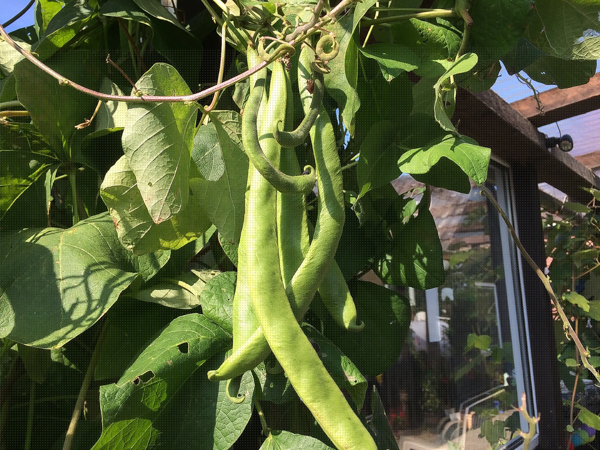
Green beans, like a good strawberry or heirloom tomato, are not meant to keep. By the time they hit the grocery store shelves, they’re a pale imitation of their former selves.
Delicate heirloom varieties, like haricot verts, never make it that far. A few fancy restaurants work out a deal with farmers to deliver the same day, but beyond that luxury, the only way to experience them is to grow them yourself.
Green beans couldn’t be easier, or more rewarding to grow. They’re a great crop for children’s gardens because they’ll often produce heavily under benign neglect.
Choosing Green Bean Varieties
Green beans come in many different varieties, but there are two main groups: pole beans and bush beans. Both varieties have many different cultivars and come in all manner of colors and flavors.
Bush Beans – Grow in a short bushy habit and tend to produce green beans all at once over a short season. They’re often succession planted to ensure a reliable crop all summer long. Bush beans prefer hotter temperatures, and they’re generally easier to grow because they don’t require trellising.
Pole Beans – Can grow quite tall if given enough vertical space on a trellis to climb. Each plant will produce a handful of beans over a long growing season. Unlike bush beans, pole beans are better for cooler climates.
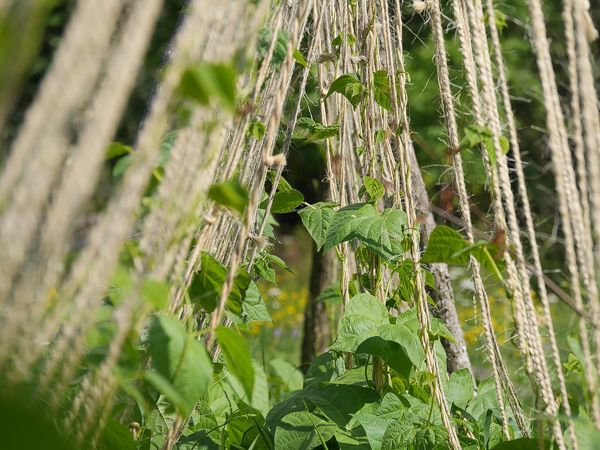
How to Plant Green Beans
I’ll often see green bean sprouts in 6 packs at our local nursery, and I’m always perplexed. They don’t need to be transplanted, and in fact, they’re much easier to direct sow.
In fact, they may well not survive transplanting. That 6 pack of bean plants may seem convenient, but a whole packet of 50+ bean seeds would have cost less and yielded better results.
Plant green beans outdoors anytime after the last spring frost. Soil temperatures only need to be 48 degrees for most varieties to germinate, so you can get them in as soon as frost risk has passed.
Since green bean seeds are thick-coated, they appreciate an overnight soak in room temperature water to fully hydrate before planting. That’s nice but completely optional.
You can in fact just stuff them in the ground and so long as they’re covered by a good layer of dirt (about 1 inch) and receive ample water on well-drained soil, you’ll have green bean plants in 1-2 weeks.
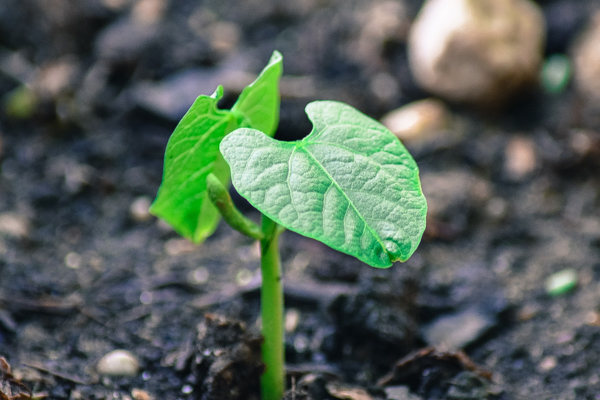
Growing Green Bean Plants
Green beans need well-drained soils to thrive, but they appreciate a light mulch to maintain slightly moist soil. They’re a legume that fixes nitrogen from the air, so they generally don’t require supplemental fertilizer except on the poorest of soils.
People actually plant them to improve soil fertility, but to get the best results from that you need to till the whole plant in, beans and all. So much for your harvest.
Still, they’re a good plant to add to your garden rotation following heavy feeders like tomatoes and corn. They take very little from the soil, and they’ll give the land a chance to recover a bit.
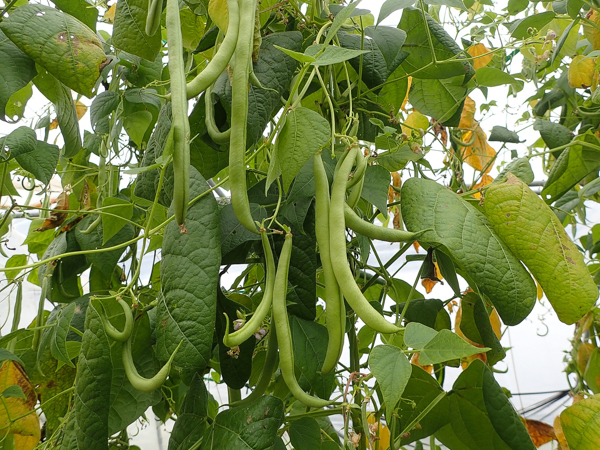
Harvesting Green Beans
It’s important to keep harvesting green beans regularly. If you skip even a few days, the plants will end their reproductive cycle and stop producing.
Around these parts, we get plenty of rain in the summertime and gardens rarely need watering. When an avid gardener goes away for the weekend, rather than arranging for a neighbor to water their garden, they ask them to pick their green beans.
Harvest green beans when the seeds are still immature. Once the pods become plump and meaty, but before the seeds inside develop into full beans. This results in a crisp pod, that’s still tender.
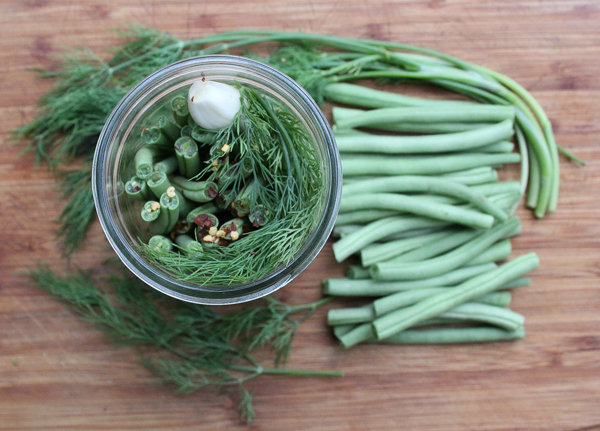
Preserving Green Beans
Green beans are blanched and frozen by many gardeners with great results. Home-canned green beans are also popular, and they’re much tastier than store-bought canned beans.
Since green beans are a low acid food, they must be pressure canned rather than a simple water bath. Pickled green beans, known as dilly beans, are pickled in vinegar like cucumbers and can be processed in a water bath.
I’m especially interested to try an old-school method of preserving green beans, described in the book Preserving Food without Canning or Freezing. The method makes dried green beans called “leather breeches” and has you blanch fresh green beans in salt water before hanging them on a string to dry.
When you’re ready to cook them, the beans are simmered to rehydrate them. Seems like an interesting, and low-energy way to put up a lot of green beans.















How many pole bean seeds ought I plant in a 5-gallon bucket? Is it possible to dry and use seeds that have been removed from the pod for planting? We bought a bag of green beans to make with dinner but our menus changed and I couldn’t get to them right away. Last night I got to them, but there were a few that had mushy bodies or dried out stems, just the stuff one would normally compost. But not me. I took out the individual beans in their little membranes to dry and plant next year, and then placed the seeds on a couple of round paper towels in an open-air container in the kitchen, but not in the sun. Are they still viable? Or must they be allowed to dry on the vine/bush?
I apologize for this being so long and so full of questions, but I can’t seem to find anything that actually addresses them, and I’m hoping you can spare the time to answer! Thank you so very much!
If the beans were fully mature, it should be fine to air dry them. Let us know how they turn out.
Can you plant green beans in 5 gallon or smaller is bush better than pole in container thank you vicky
Both pole and bush beans will grow well in containers. The pole beans will need a little more depth than bush beans but if you’re using 5 gallon buckets then that should be plenty of depth for either one.
It was a great story for beginners and very simple for a new people that want to start a new garden.
I try to dry them the old fashion way they were ok but it didn’t do it for me lost a lot in tase they were
Just not the same. I think the best way is to freeze them.